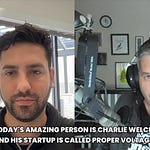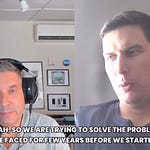Most of us know Anker as the little black brick that saved our phones when the battery dipped into the red. What’s less known is how Steven Yang built the company. He started as a Google software engineer, left a stable life, and moved into hardware without any real experience. That leap, and the mistakes along the way, tell us a lot about what it takes to keep going.
1. Curiosity is stronger than fear
Steven admitted that if he had known how hard it would be to move from software to hardware, he might not have done it. But he didn’t overthink it. He saw that early smartphones had weak batteries, looked at the clunky packs people were carrying, and thought, “I can do this better.” Sometimes progress is just that simple: ignoring the warning signs and trusting your curiosity.
2. Build in steps, not cliffs
Anker didn’t try to be Samsung overnight. They went from replacement batteries to portable chargers, then to cables, headphones, and finally smart home devices. Steven called it “climbing stairs, not cliffs.” That lesson applies anywhere: if you can break a massive risk into smaller, connected moves, you have a better chance of surviving.
3. Failures are tuition
The company’s first big stumble came with their 3D printer. Engineers decided to use a dual USB-C cable to connect the moving print head. It worked fine at first. Then months later, customers found the connection failed during long prints. Anker had to recall units. For Steven, the pain wasn’t just technical—it was knowing that loyal customers were frustrated. The fix wasn’t to hide the mistake, but to absorb it like tuition, improve testing, and write down new rules so the same mistake wouldn’t happen again.
4. Keep the customer at the center
When a product breaks, the instinct is often to defend yourself. Steven said the instinct at Anker is different: first, take care of the customer. Then fix the process so it doesn’t repeat. That order matters. It’s what keeps people trusting you, even when you slip.
5. Think long term, but keep tinkering
Steven talked about edge AI—models that live on devices in the home, not in the cloud. His vision is layered: massive models in the cloud, medium models in the home, tiny models in wearables. They’ll all talk to each other. It sounds futuristic, but he insists it’s just a few years away. What stood out wasn’t the prediction, but that he’s still tinkering like an engineer, still trying to solve problems from the ground up.
6. Build platforms, not empires
When I asked if he would have been happier staying at Google, he said no. What drives him now isn’t just making products, but creating a platform where other makers can build too. That’s the deeper lesson: success isn’t about being the smartest person in the room. It’s about giving people the tools and space to create something better than you could on your own.
Steven Yang left a secure job, stumbled through hardware, recalled products, and still came out with one of the most trusted consumer brands of the past decade. His story isn’t about charging bricks. It’s about curiosity, humility, and the discipline to learn from mistakes without letting them stop you.










